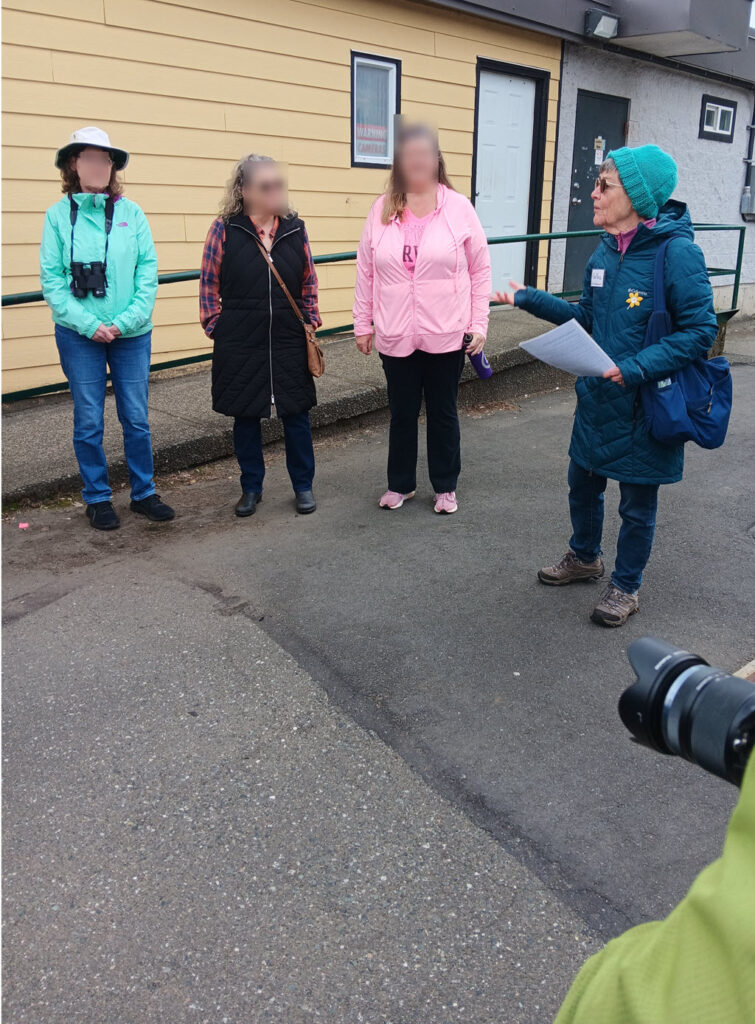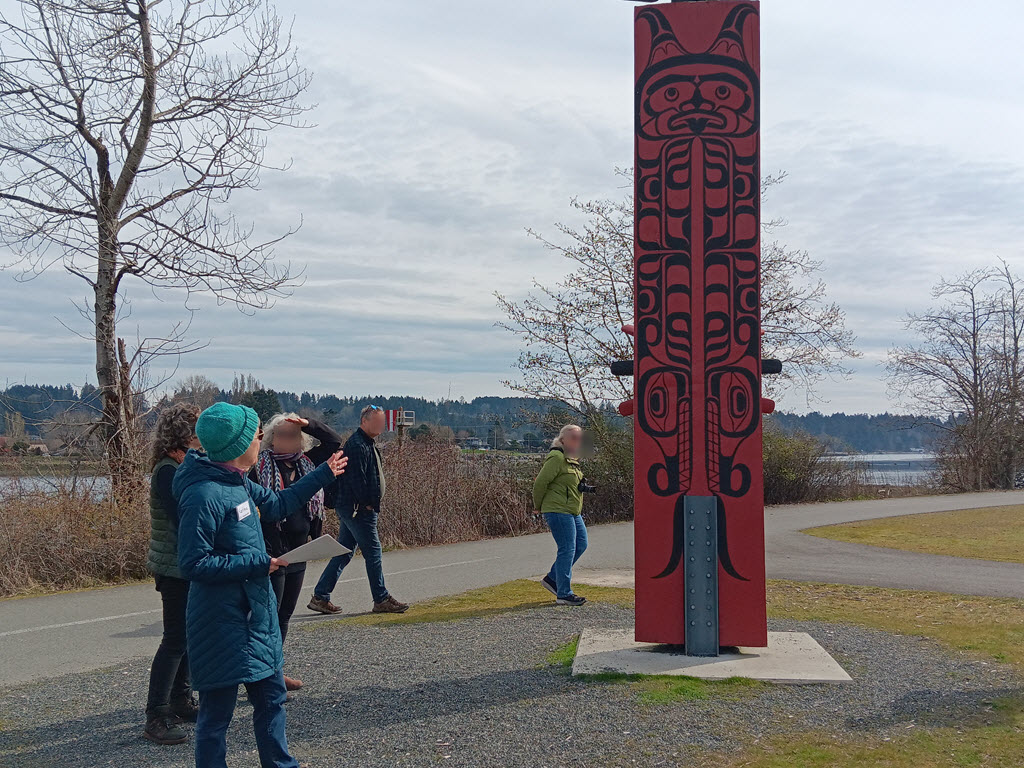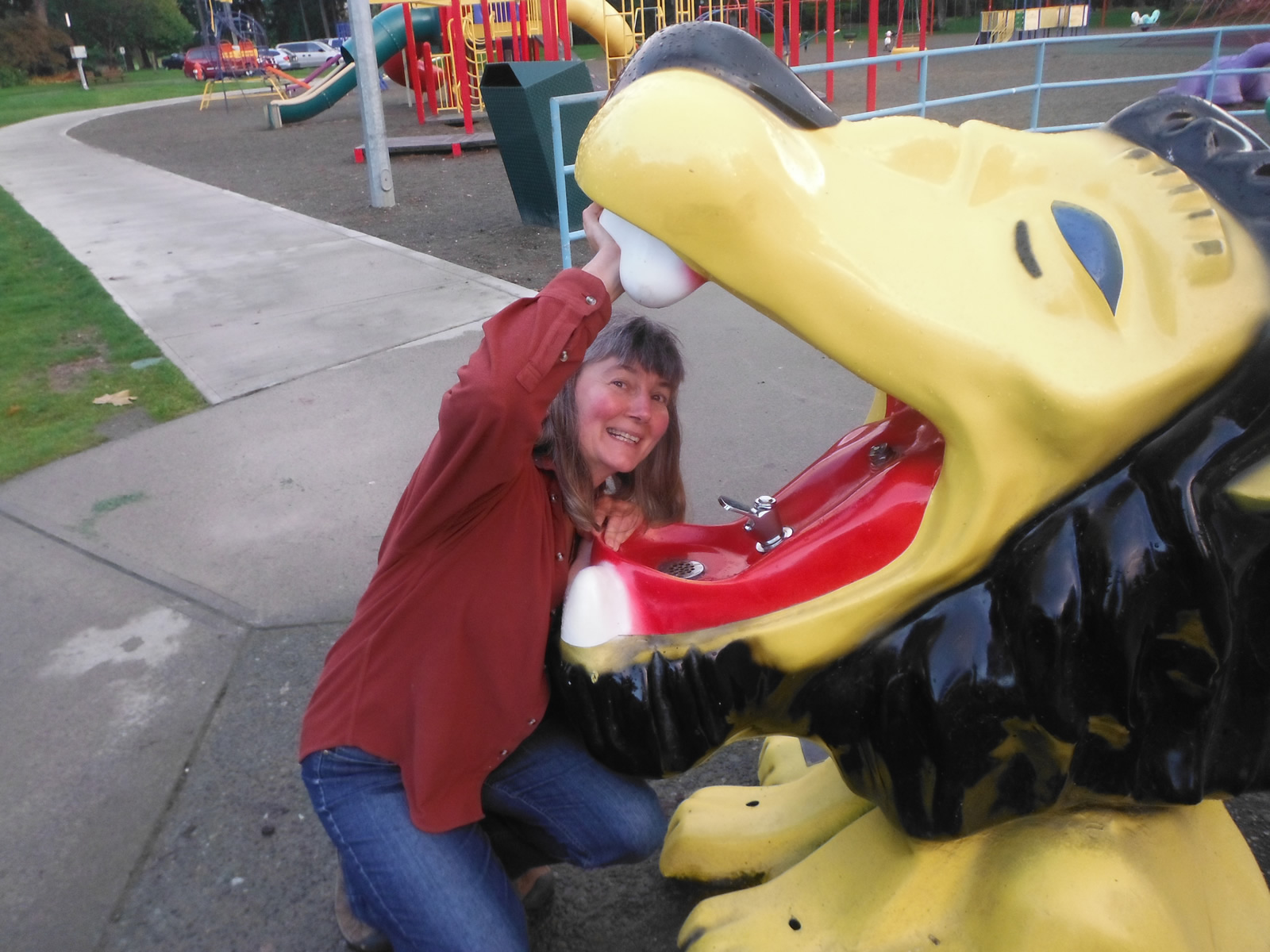I doubt that the people who created the former Courtenay sewage lagoon ever dreamt that one day it would be transformed into a popular nature park. I went on a guided tour to learn more about how persistence, patience and amazing volunteers who have worked there for more than 25 years!
As a relatively new member of Comox Valley Naturalists I signed up for the Comox Airpark tour as soon as I saw the opportunity this spring. I have been participating in removal and restoration projects in Parksville and Qualicum Beach for the last couple of years and wanted to learn more from CVN’s restoration work.

On a chilly morning this spring (April 7), I joined a small group of people at D’s Cafe at the entrance to the Airpark, to meet with tour guide Kathie Woodley and her “sweep” assistant, Linda. Wearing a bright green knitted hat and warm coat, Kathy explained the structure and scope of the tour as Linda made sure each attendee was signed in. As she spoke a small plane took off from the nearby airport, and she waited until we could hear again before beginning our tour. The footpath was already busy with young families with strollers and kids on bicycles.
As we entered the Airpark, Kathy briefly described what the lagoon looked like 25 years ago, covered a mixture of invasive grasses and plants, a sea of purple loosestrife, yellow flag iris and canary grass. She pointed out the the successful introduction of native Garry oak trees and other trees and shrubs that had been planted as CVN volunteers patiently cleared patches of ground along the waters edge and along the pathways over the years. Each year different problem areas were addressed and volunteers tried different methods of removal, counting and recording successes and learning from failures. The careful counting and tracking of invasives proved the value of the volunteers efforts and helped them to obtain some funding and assistance from the Town over the years.

Kathy has been learning winter plant ID and shared with us some of the ways to recognize the plants that weren’t yet in full leaf or bloom. She described some of the history of the local indigenous peoples and what they might have seen prior to the development of the area many years ago and
introduced us to a striking monument near the entrance–a red and black territorial marker for the K’omoks people on one side and a beautifully carved totem pole on the other. (see K’omoks First Nation website for more info)
As we continued through the Park, Kathy described some of the different approaches to invasive plant removal that the volunteers had tried over the years – successes and failures! There were many questions and Kathy seemed to be able to answer most of them due to her regular visits to the Airpark. She monitors and reports on various removal and planting efforts during the winter and counts the Cottontail and European rabbits that are the newest challenge for the Airpark.
Halfway through the tour, we were met by one of the original volunteers and directors of the Airpark restoration efforts–Frank Hovenden. He described the different native plants that they have tried (and often succeeded) in growing in cleared areas: camas plants (since 2012), Hooker’s onion, Nodding onion and Fools onion and flowering shrubs like Oceanspray, Ninebark and Flowering red currant along the Riverway and by the Totem pole. They introduced Sea-side lupin and Yarrow in 2024 along with Deltoid balsamroot. Frank was proud of the fact that many of the native species have been gathered (with permission) from private lands in the area or raised by him or a few other naturalists as well as some that are purchased from Streamside Native Plant Nursery. The success of these replantings is supported by hand watering by volunteers over the dry seasons. The dedication of their group of volunteers is truly astonishing – they did >160 hours of work in 2024 and similar efforts each year prior. Wow.
With an interested tour group and three committed and enthusiastic CVN leaders, our tour went overtime. When Kathy & Frank drew the tour to a close, Linda distributed the club’s amazing Nature Viewing Guide and explained how carefully it had been constructed to provide quick reference information to 20 nature viewing sites, in an easy-to-read and beautifully illustrated pamphlet. To learn more, explore the Comox Valley Naturalists’ Nature Viewing Guide page that provides detailed information on more than 40 sites in the Comox Valley.
The ongoing efforts of so many knowledgeable and committed naturalists was (and is) inspiring. Thanks!
